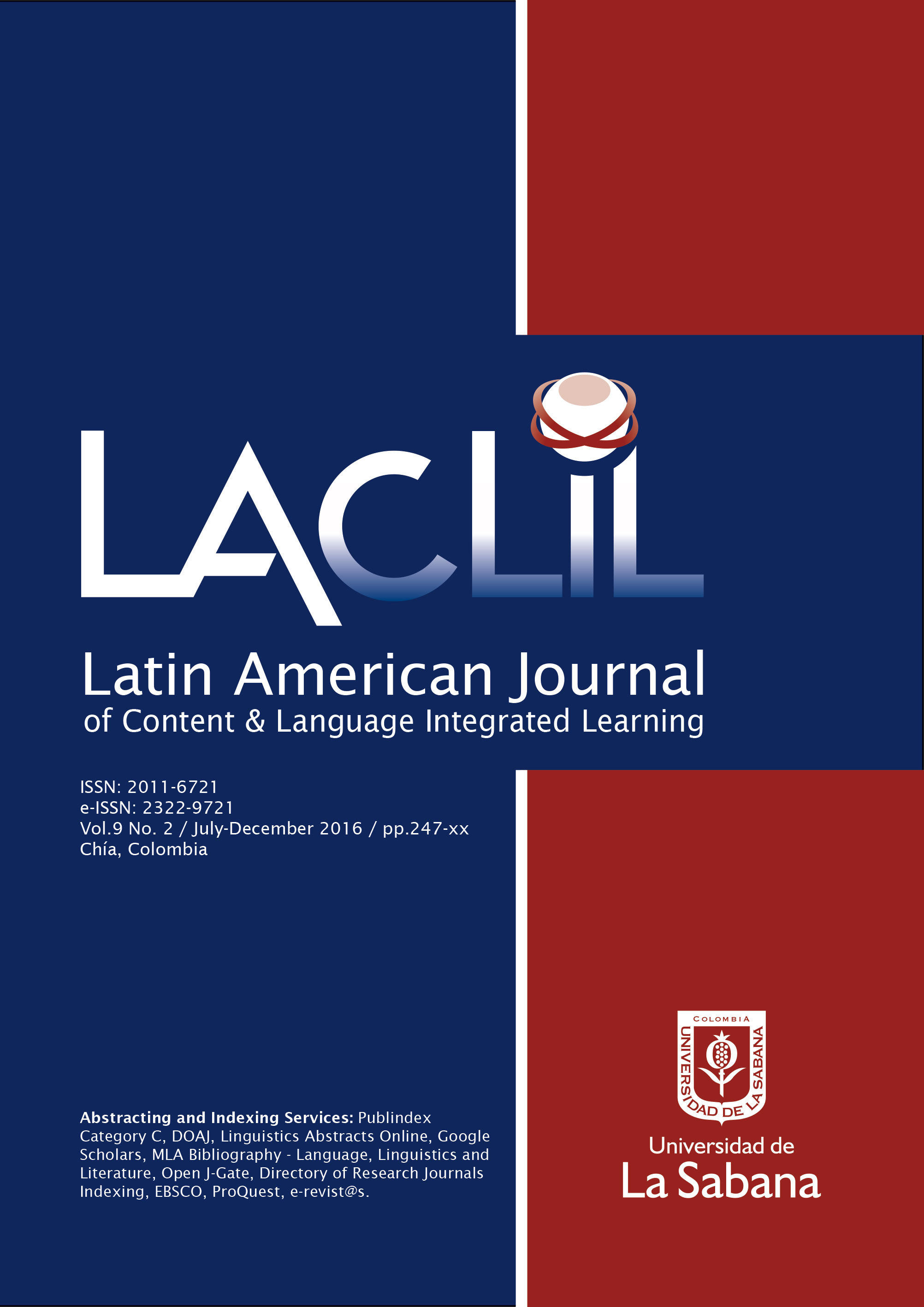Assessment in CLIL: Test development for content and language for teaching natural science in English as a foreign language
DOI:
https://doi.org/10.5294/6978Keywords:
Science, young learners, CLIL, summative assessment, assessment frameworks, reliabilityAbstract
On-going bilingual programs without regard to needs analysis; little research on the actual effects of CLIL in Colombia and vague awareness or knowledge about the necessary considerations for effective CLIL programs, underpin the need to address a particular issue of curriculum as it is summative assessment. This small scale study takes place in a Natural Science class using a CLIL approach with thirdgrade students at A2 proficiency level who have been progressively immersed in
a bilingual program at a private school in Bogotá, Colombia. Regularly scheduled tests were analyzed in order to identify suitable assessment items hat simultaneously report on the content and language achievement in order to provide guidelines for test development that are aligned with the teaching goals, consistently measure students’ progress, and facilitate teaching practices. This study entails a systematic examination of test items using formal item analysis to depict test validity from an assessment grid that integrates content, at different knowledge levels, CALP functions and cognitive skills. The study concludes that the assessment grid is a helpful tool to discriminate language and content achievement in the results of multiple-choice CLIL tests, by increasing teachers’ understanding of the language demands of test items and the level of difficulty of content tasks.
Downloads
References
Bailey, K. M. (1998). Learning About Language Assessment: Dilemmas, Decisions, and Directions. United States of America: Heinle & Heinle Publishers.
Coyle, D., Hood, P., & Marsh, D. (2010). CLIL Content Language Integrated Learning. Cambridge: Cambridge University Press.
Curtis, A. (2012a). Colombian teachers’ questions about CLIL: Hearing their voices – in spite of “the mess” (Part I). Latin American Journal of Content & Language Integrated Learning, 1-8.
Curtis, A. (2012b). Colombian teachers’ questions about CLIL: What can teachers’ questions tell us? (Part II) . Latin American Journal of Content and Language Integrated Learning, 1-12.
Lugo-Vásquez, V. E., Fandiño-Parra, Y. J., & Bermúdez-Jiménez, J. R. (2012). Retos del Programa Nacional de Bilingüismo. Colombia Bilingüe., Vol. 15, No. 3, 363-381.
Mariño, C. M. (2014). Towards implementing CLIL (Content and Language Integrated Learning) at CBS (Tunja, Colombia). Colombian Applied Linguistics Journal, 151-160.
McDougald, J. (2009). The State of Language and Content Instruction in Colombia. Latin American Journal Of Content & Language Integrated Learning, 2(2).
McDougald, J. (2015). Teachers´ attitudes, perceptions and experiences in CLIL: A look at content and language. Colombia Applied Linguistics Journal, 25-41.
doi:http://dx.doi.org/10.14483/udistrital.jour.calj.2015.1.a02
Otálora, B. A. (2009). CLIL Research at Universidad de La Sabana in Colombia . Latin American Journal of Content & Language Integrated Learning, 46-50.
Quartapelle, F. (2012, February 10). Assessment and Evaluation in CLIL. Retrieved from Assessment and Evaluation in CLIL: www.aeclil.net
Rodríguez, M. (2011). CLILL: Colombia Leading Into Content Language Learning. Íkala Revista de Lenguaje y Cultura, 79-89.
Short, D. (1993 ). Assessing Integrated Language and Content Instruction. TESOL QUARTERLY , 627-656.
Yi Lo , Y., & Lin, A. (2014). Designing Assessment Tasks with Language Awareness:. Retrieved from http://wlts.edb.hkedcity.net/: http://wlts.edb.hkedcity.net/filemanager/file/A&L3(11)_Lo&Lin.pdf
Downloads
Published
How to Cite
Issue
Section
License
This Journal and its articles are published under the Creative Commons CC BY 4.0 DEED Attribution 4.0 International license. You are free to: Share — copy and redistribute the material in any medium or format for any purpose, even commercially. Adapt — remix, transform, and build upon the material for any purpose, even commercially. The license cannot revoke these freedoms as long as you follow the terms of the license.








